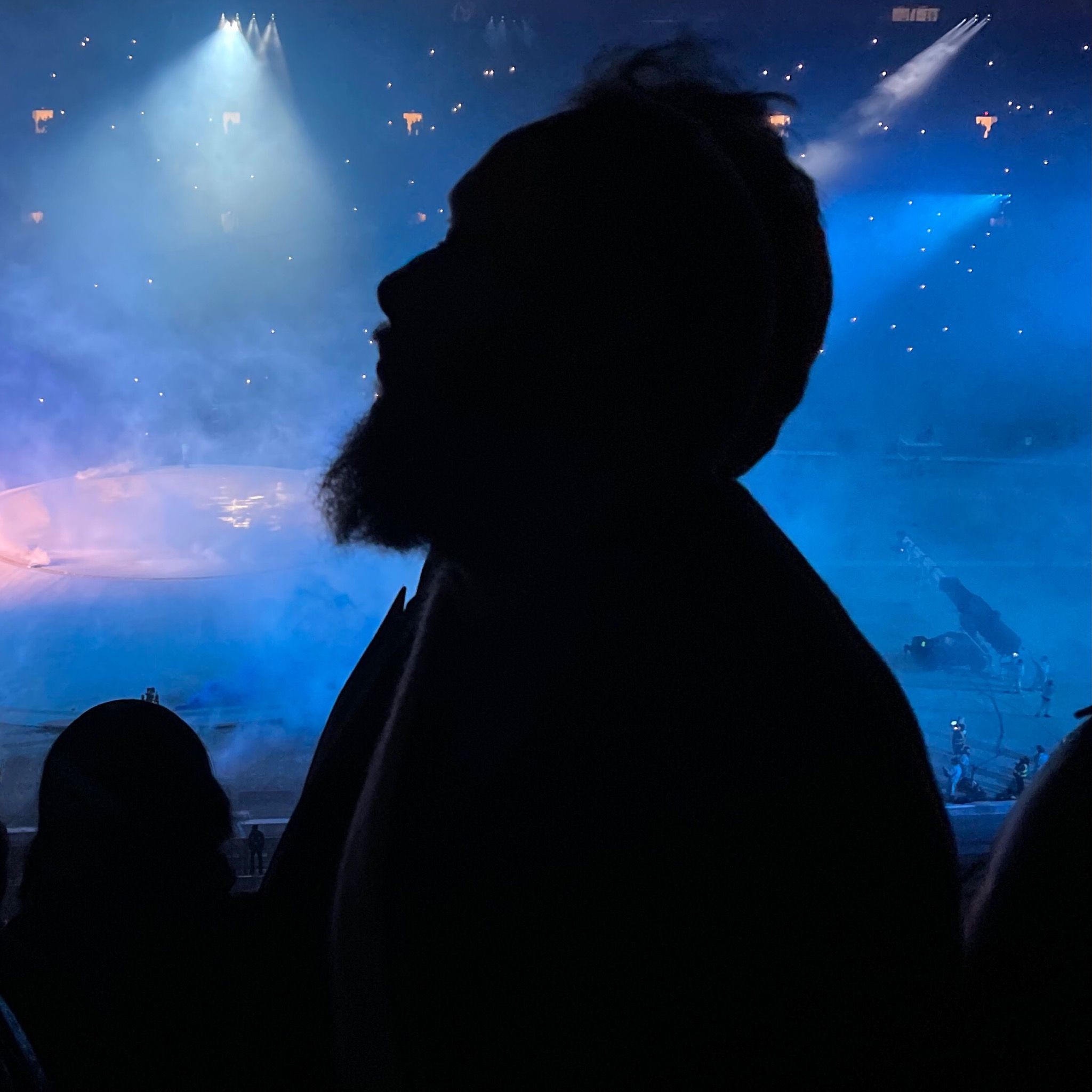The Future of Couture: Neo-digital natives, blockchain luxury, and algorithmic customization
|MADELEINE HOLTH
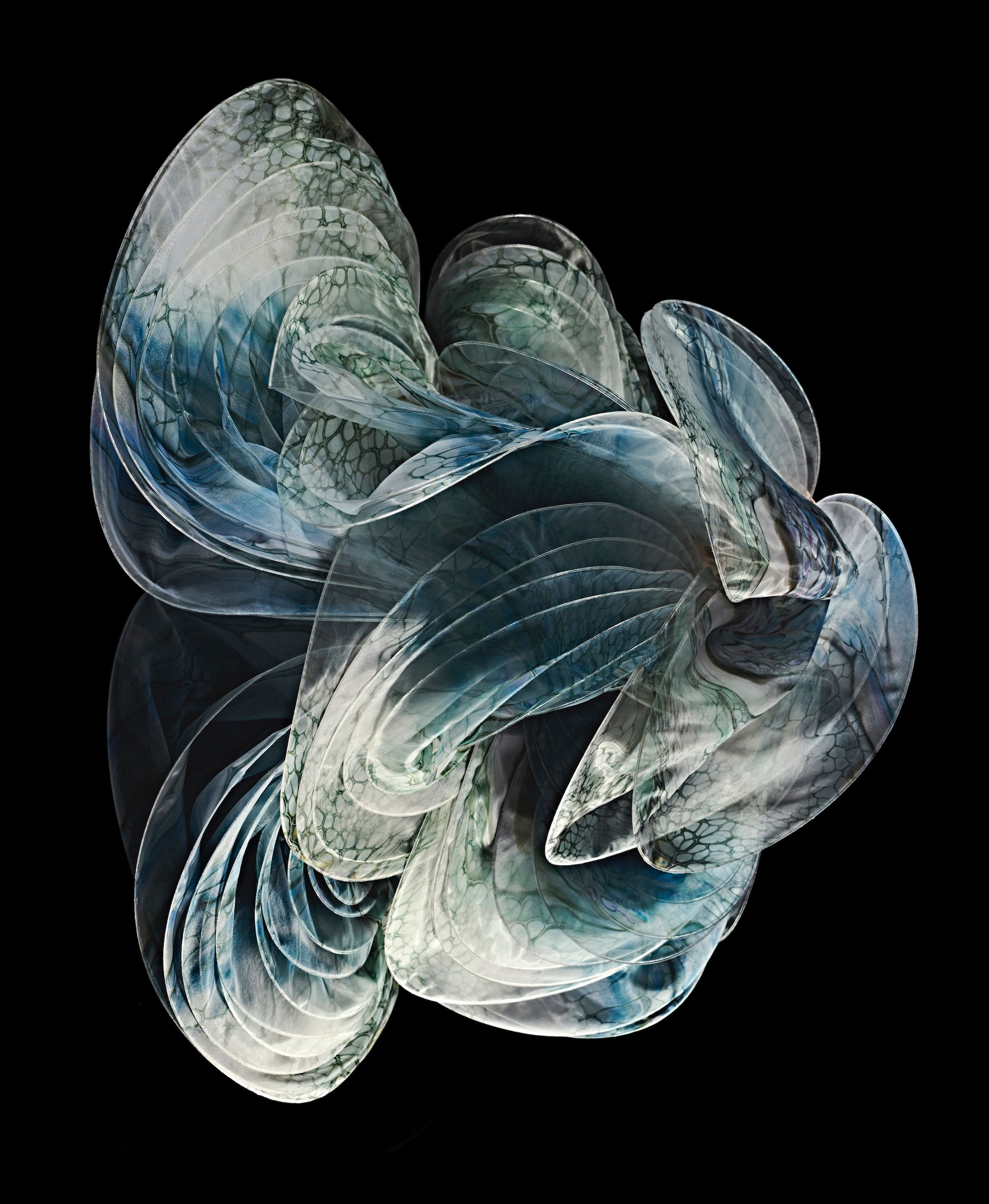
Couture is evolving: the lucrative, traditionally analogue industry of customized luxury clothing is at last being revised using new digital technologies including AI and blockchain, as a young, digitally native and supremely wealthy generation of consumers appears on the horizon. “Old money,” it would seem, is no longer the core member of the couture club: Gen Z and Millennial spending power will soon account for most of the global luxury goods market. In response, couture is turning to tech, startups, and crypto capital – a few weeks ago in Paris, Twitter founder Jack Dorsey sat front row at Dior, Celine, and Rick Owens. And when tech sector millionaires spend on luxury goods, they’re going to do it through the online channels they know best: by 2025, roughly half of all luxury purchases will depend on new technologies, with virtual reality and mobile payments as well as online interactions providing platforms for sales.
Appealing to this new consumer means adapting culturally and aesthetically as well as technologically. Unlike ready-to-wear, which has already adapted to the millennial and Gen Z palate (and palette), couture’s binary codes of dress and material fussiness – embroidery and tulle for women, tailoring for men – couldn’t be further from new generational codes. In a 2018 study, “38% of Gen Z respondents and 27% of Millennial respondents ‘strongly agreed’ that gender no longer defines a person as much as it used to.” Couture’s gender-role reinforcement might easily fall short of millennial expectations. Despite the adaptive challenges, however, the list of companies seeking to evolve the landscape of couture for the digital age is growing. As couture week in Paris comes to a close, Madeleine Holth reports on the last year of innovations, as the couture paradigm shift continues to buffer.
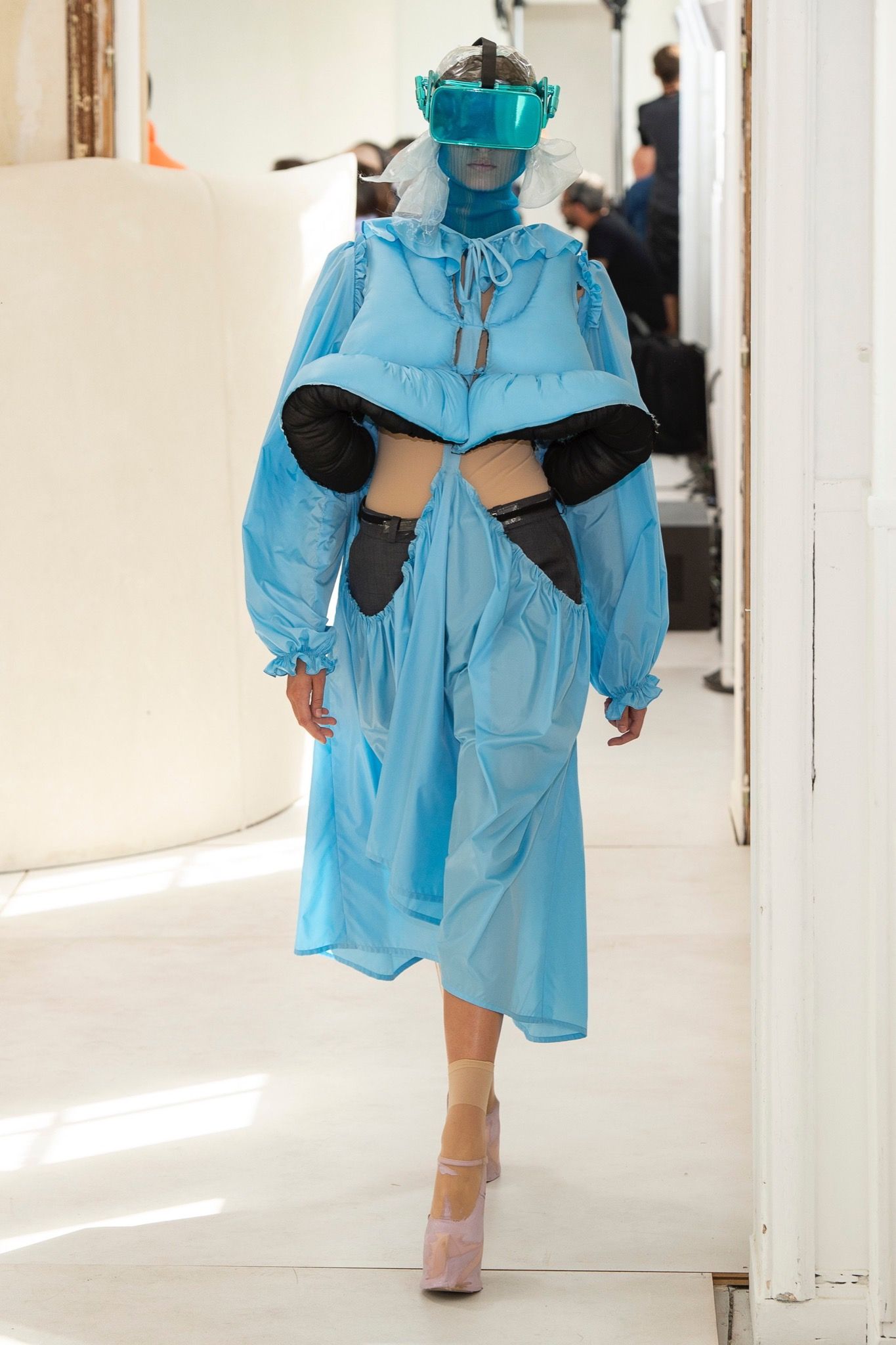
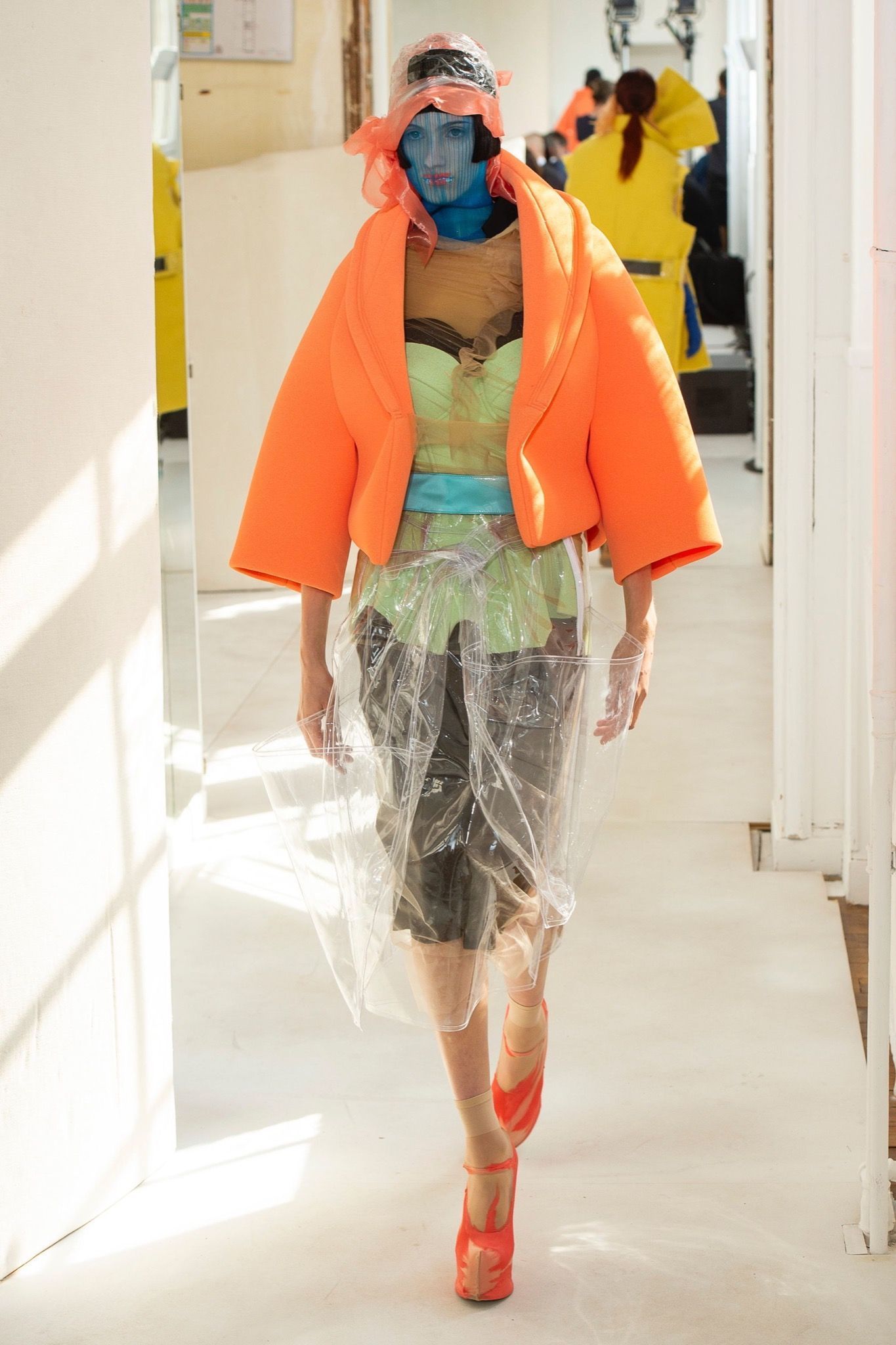
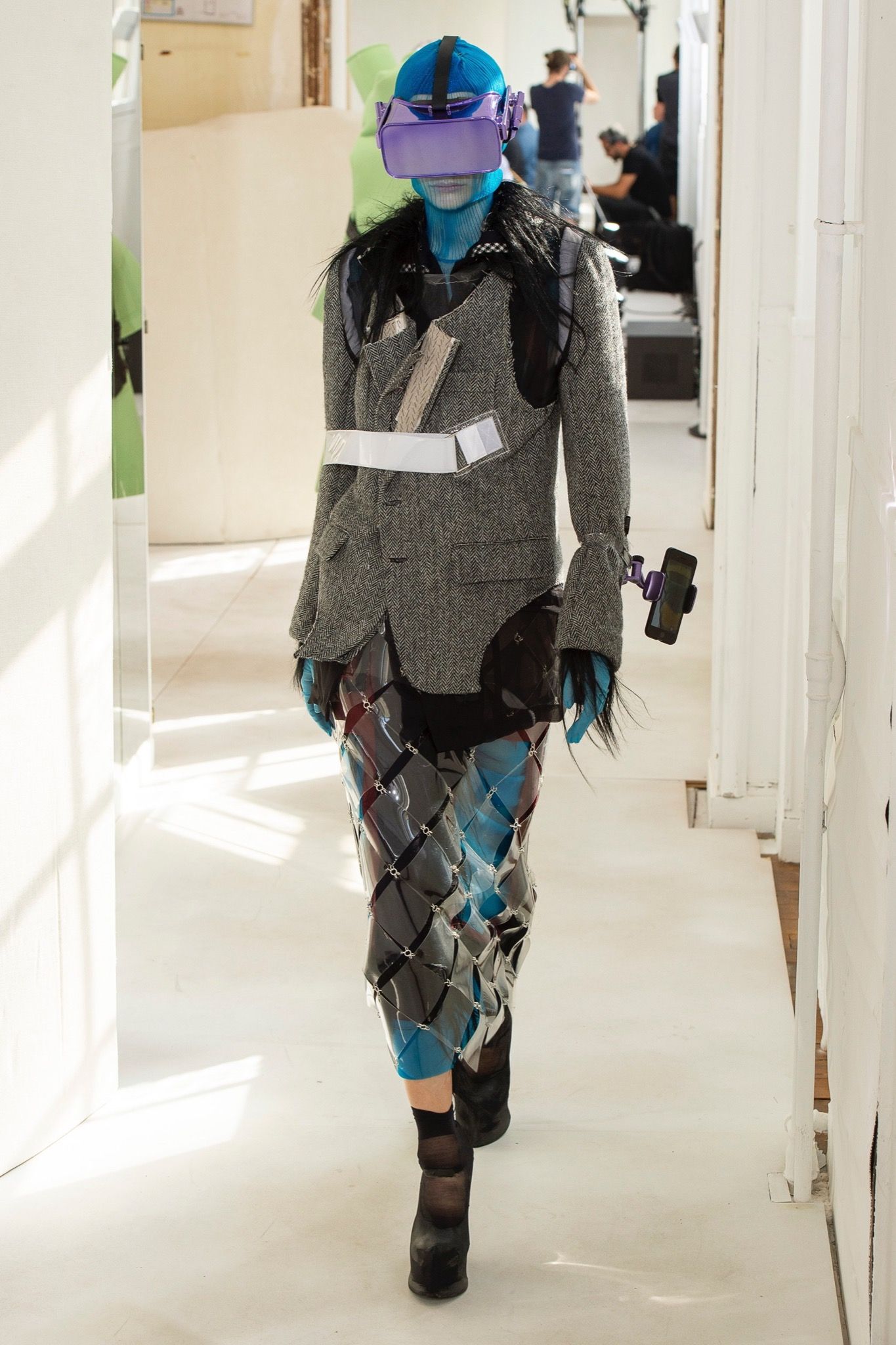
JOHN GALLIANO
John Galliano’s Fall 2018 artisanal collection for Maison Margiela was designed for “the neo-digital natives,” a tribe whose daily existence is fused with their surrounding multi-dimensional technology. Galliano embedded those surroundings into the show, displaying metallic VR headsets and Apple products as primal extensions of the models, rather than accessories.
The team at Maison Margiela has been studying the next generation of couture consumers in their laboratory of artisanal clothing for more than four years. This pursuit hasn’t been limited to the fashion house’s dipping its toes in tech. This year’s Fall 2019 collection was a gender-neutral, “co-ed” collection highlighting upcycled trousers, projecting onto clothes and using pixelated images as prints. Anti-elitist, sustainable, non-binary – Galliano understands Gen Z better than most.
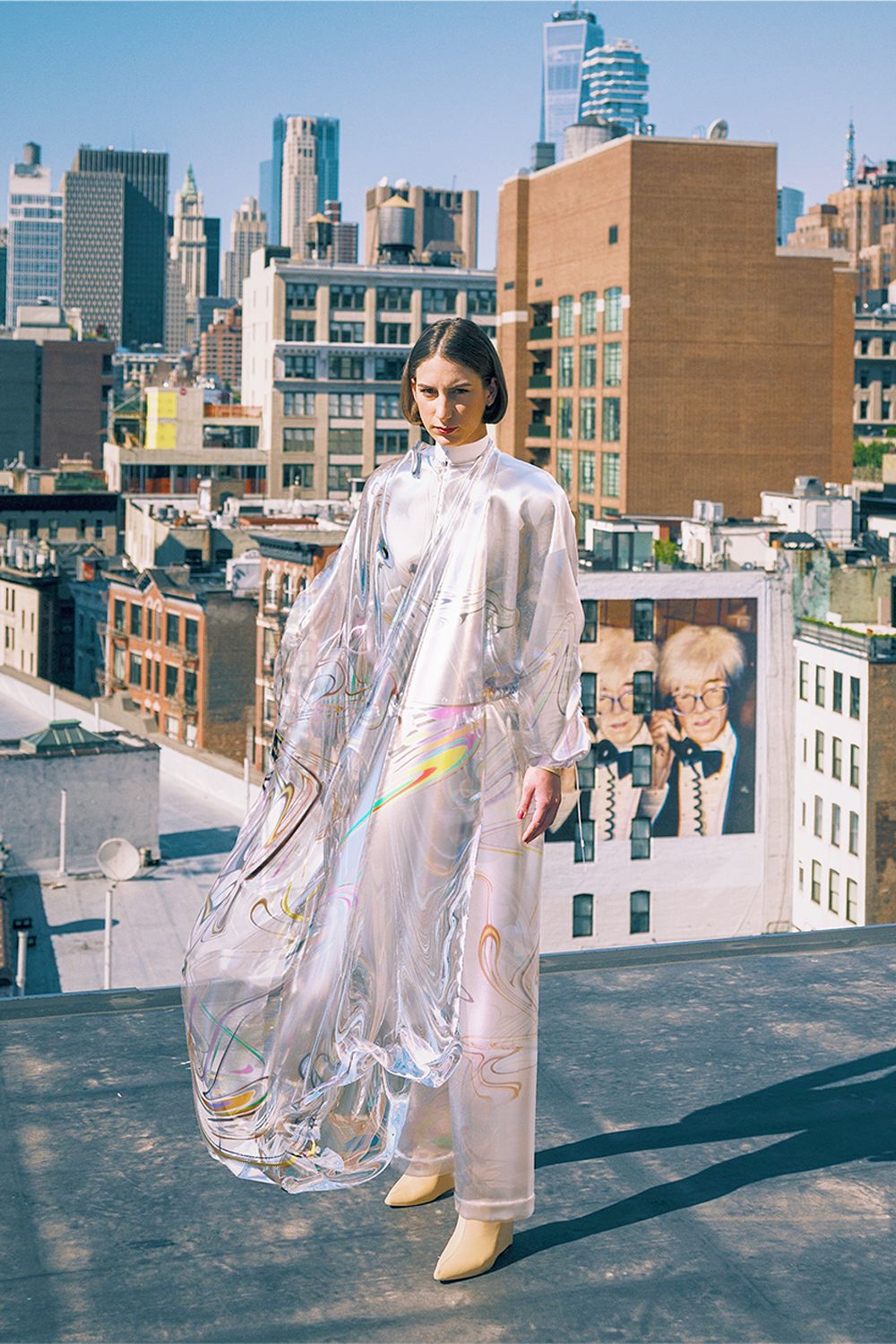
AURA
Meanwhile, tech corporations are taking the applied scientific route to luxury and couture. Earlier this year, the New York-based blockchain company ConsenSys announced a partnership with Microsoft and LVMH to launch AURA, a blockchain platform that will merge Ethereum technology with Microsoft’s Azure, allowing customers to verify the authenticity of their goods and inform themselves about fabric origin and point of sale history. Last month, during Ethereum’s “Ethereal Summit” event, the world’s first digital couture dress was auctioned off on the blockchain: originally designed by the Amsterdam-based digital fashion house The Fabricant, and launched in collaboration between CryptoKitties’ Dapper Labs and Johanna Jaskowska, the piece was a one-of-a-kind digital code that sold for $9,500. After the auction, the company stated on Instagram, “We actually sold one of our items that has never been physical. Someone owns it now, and will be able to wear it if they choose to.”
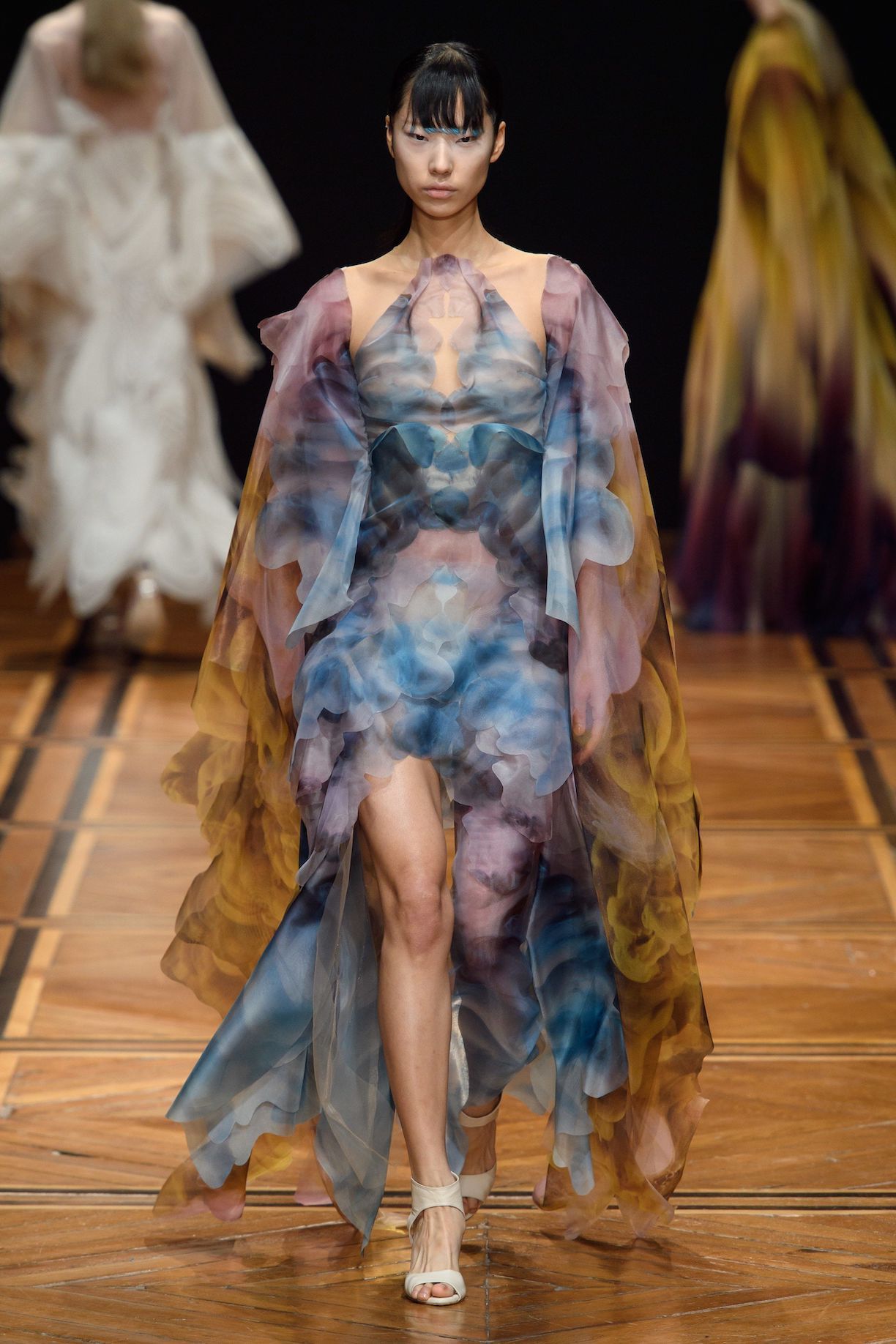
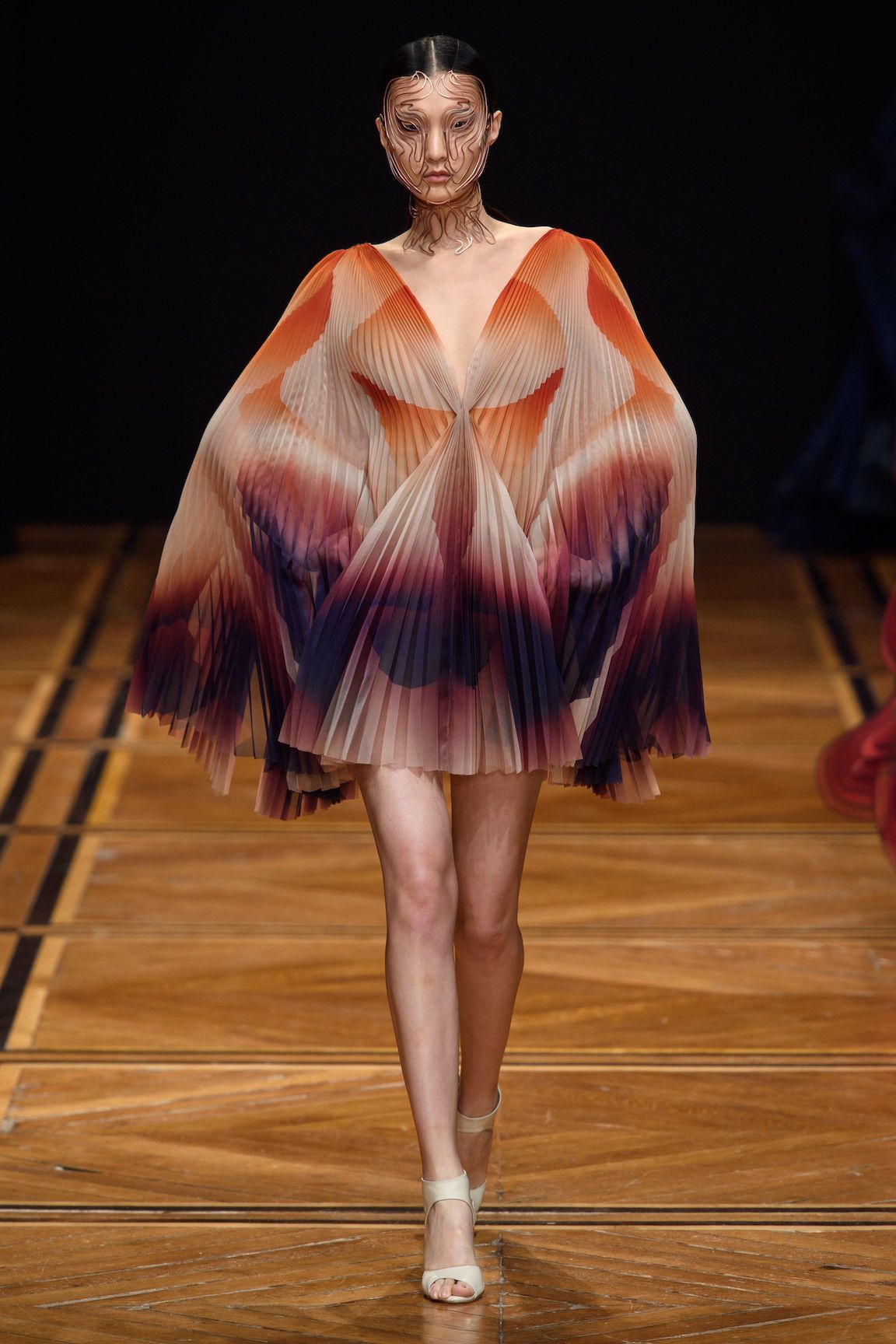
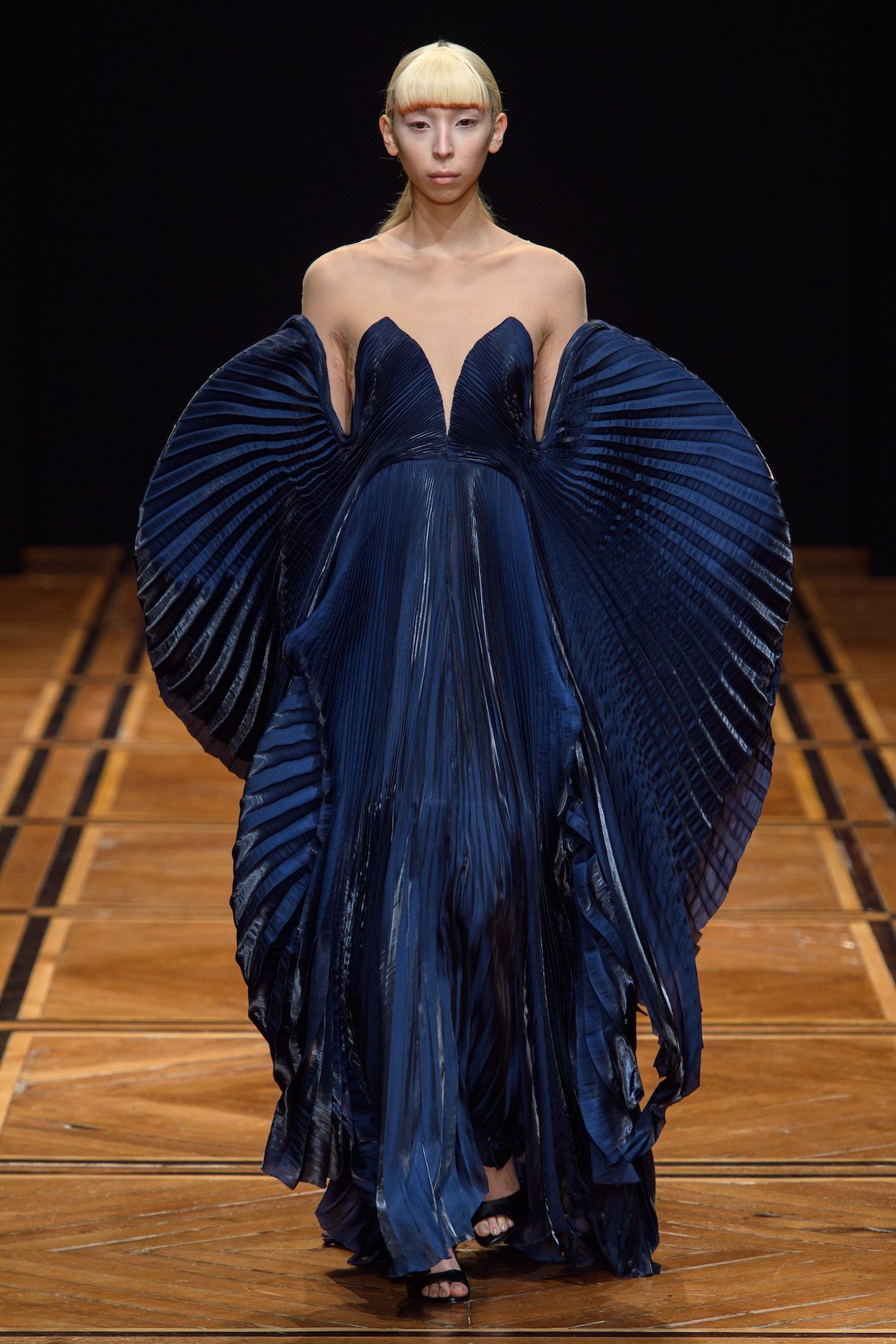
IRIS VAN HERPEN
Also from the Netherlands, Iris van Herpen is perhaps the designer best known for experimental technological design, creating couture looks featuring laser-cut PETG, 3D printing, and silicone coating. Van Herpen’s Spring 2019 kinetic couture collection was inspired by human-animal DNA engineering. For the collection, she collaborated with former NASA engineer Kim Keever to create a translucent organza fabric, which she presented alongside 3D-printed jewelry. “With the advances in DNA engineering and the first successful creations of human-animal hybrids and cybrids, the mythological dreams of humankind since the dawn of civilization are shifting to the canvas of science,” said the brand.
This week’s Fall 2019 couture collection elaborated on these themes. The show featured roving set design by kinetic landscape artist Anthony Howe, who also created her final look, a robotic dress in constant movement made from octane, 3DS Max, feathers, fiberglass and stainless steel. Celine Dion attended in one of van Herpen’s signature 3D-printed dresses.
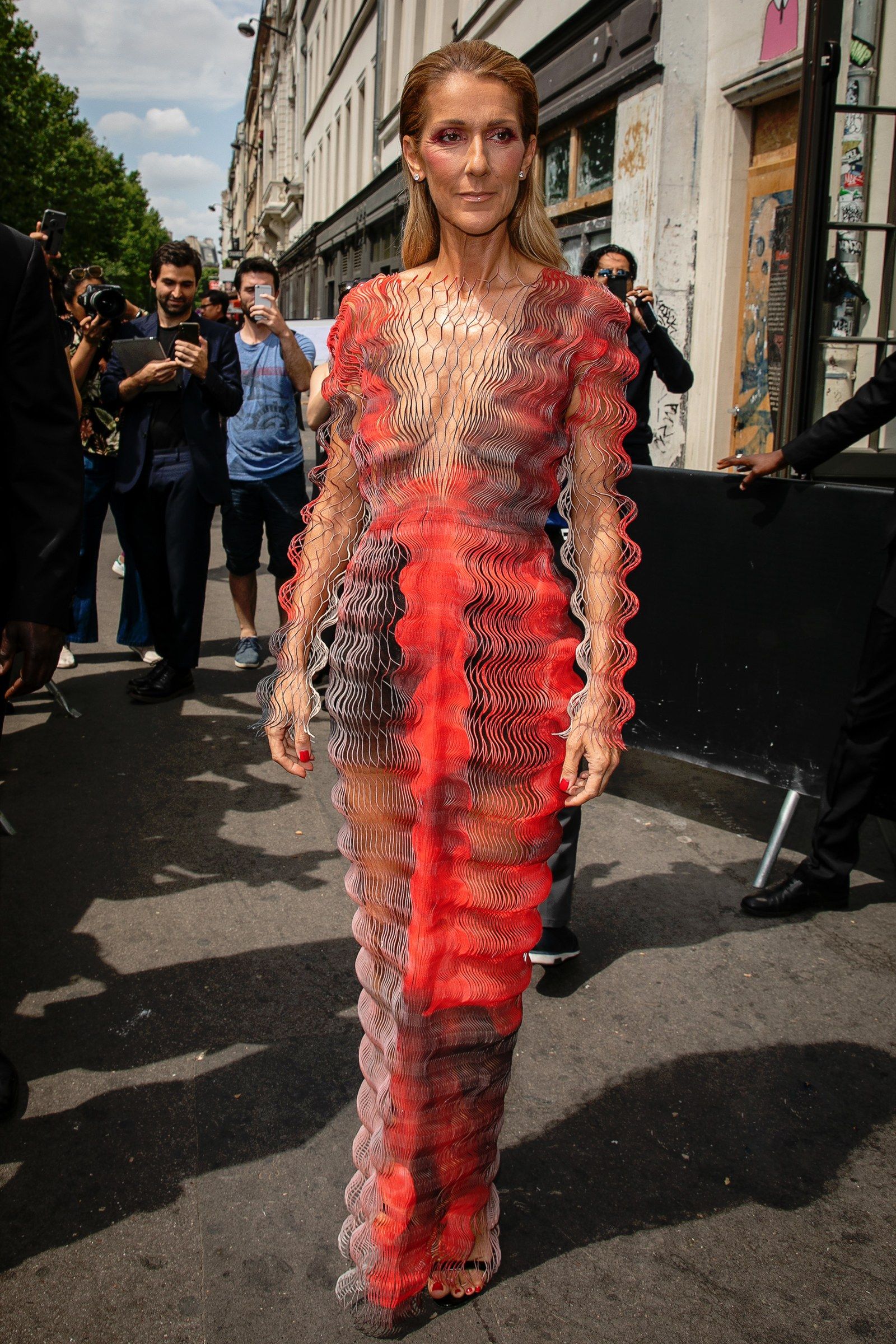
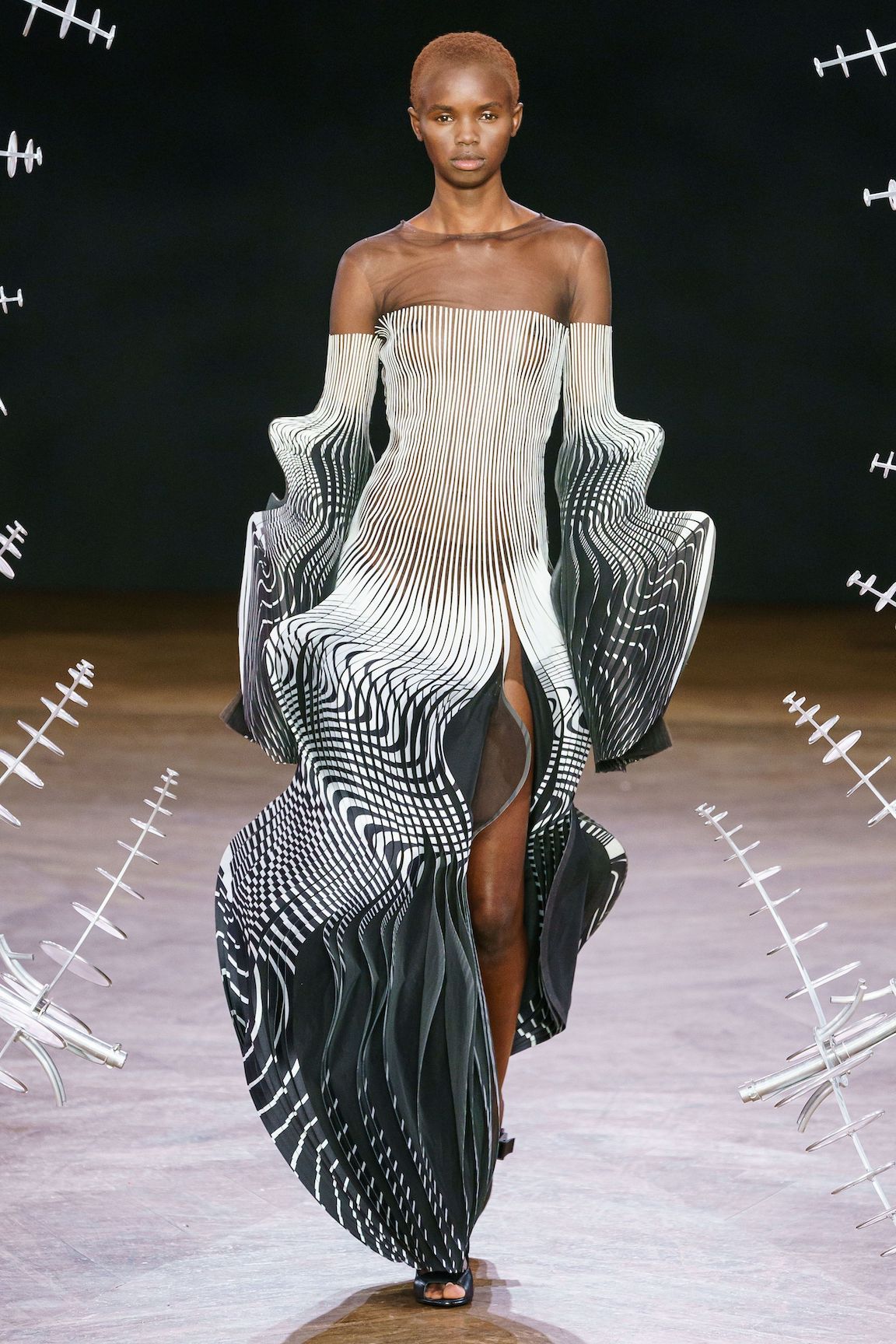
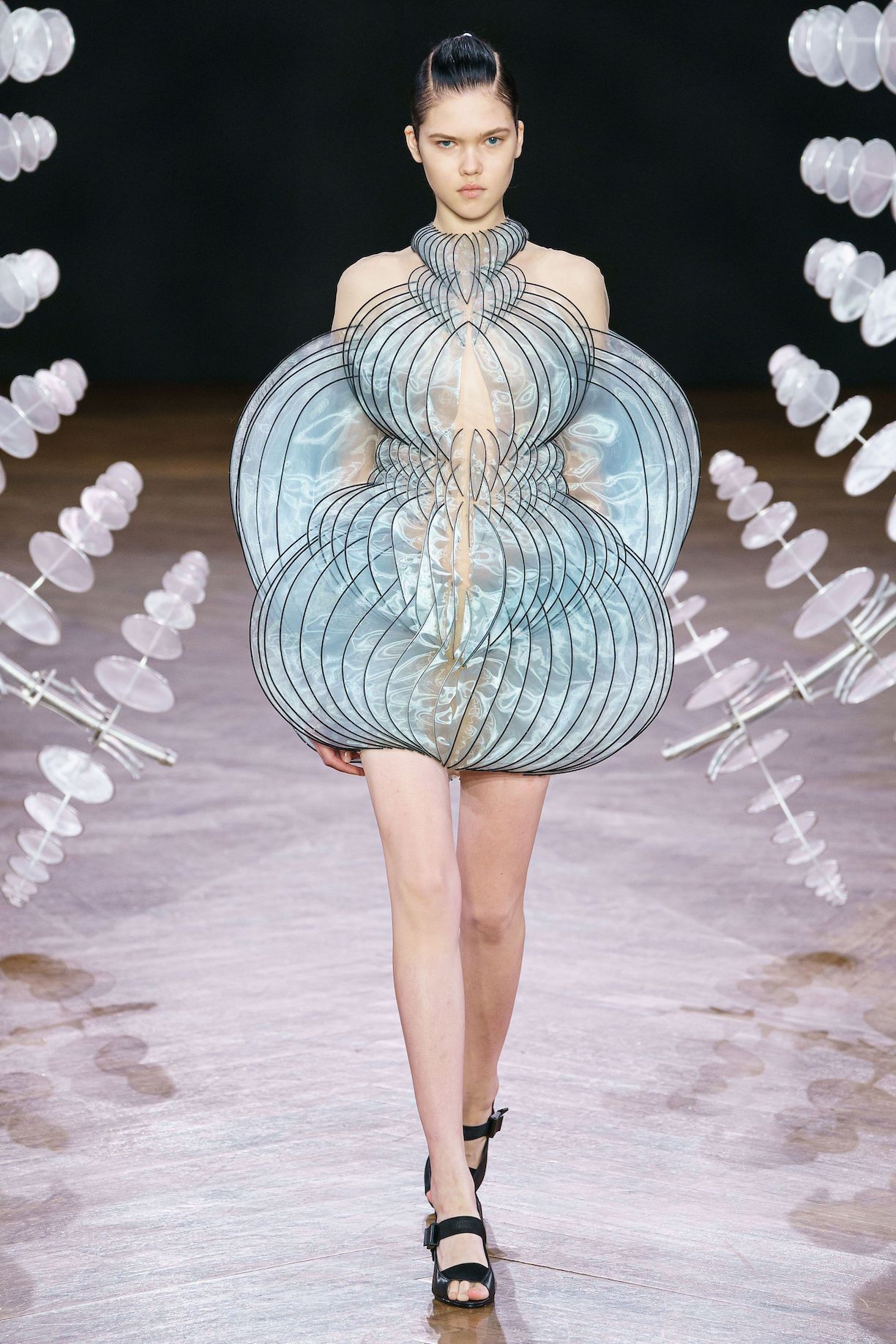
SYNFLUX
Also trending in technology and couture is the Japanese fashion research studio Synflux, which recently developed a system of digitized clothing that aims to reduce the amount of waste from production. Titled Algorithmic Couture, the project uses 3D body scanning to provide accurate measurements for custom clothing. “Looking to a more sustainable future, we must reconsider the holistic cycle of fashion,” said the team at Synflux in a recent interview with Dezeen. The technology uses data to track and find clothing solutions, apparently resulting in designs that reduce waste – and make bespoke garments more accessible in the process. “Algorithmic Couture aims to democratize haute couture customization culture prevalent in the 19th-century,” according to the brand, “by revitalizing how we fashion our own style through personalization in the digital design process.”
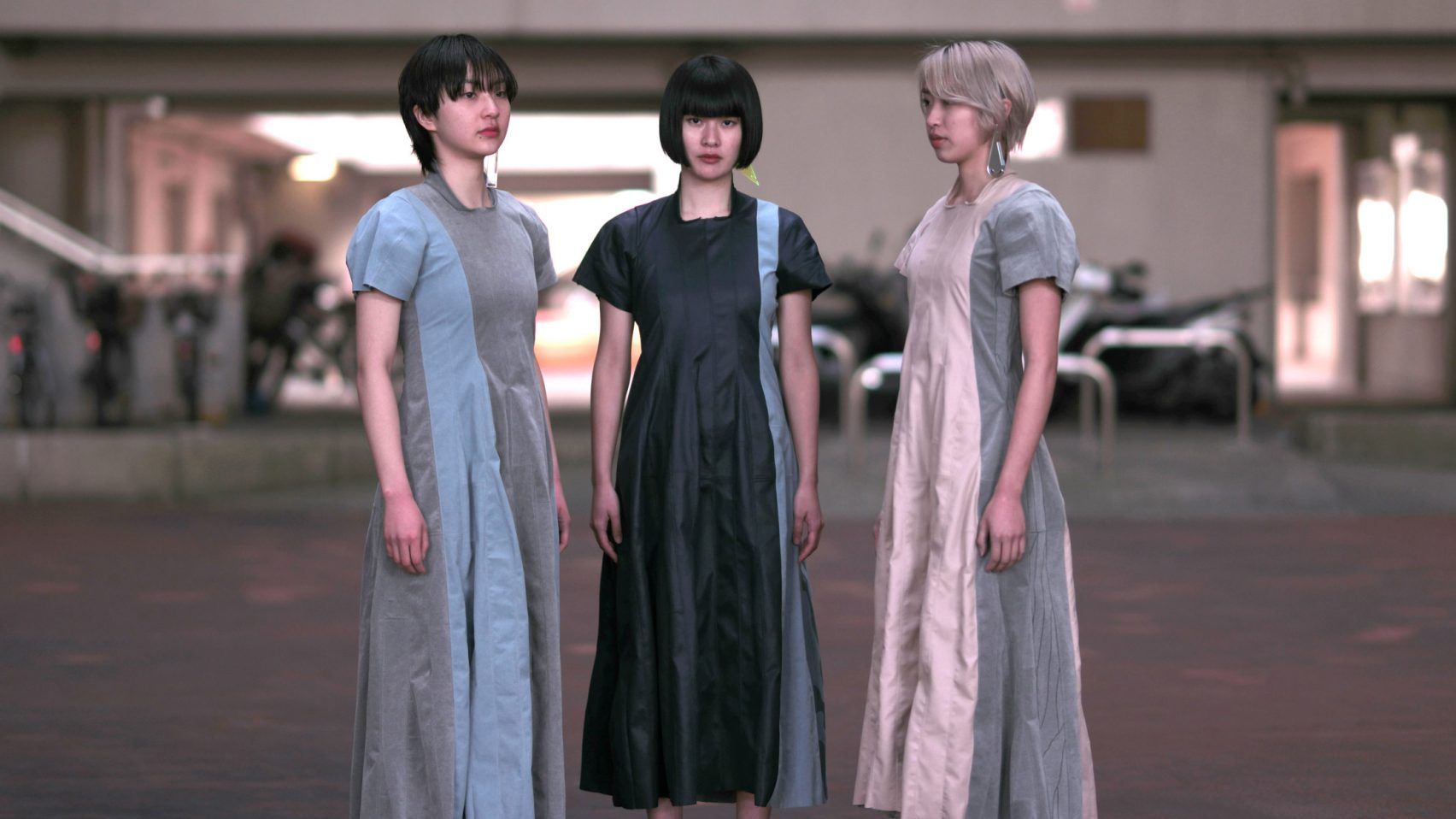
If traditional couture was created aux petites mains, AI, VR, AR, 3-D, 4-D and even blockchain technology are changing that. The result is a couture industry that appeals to new consumer demands for technological savvy, sustainability, and luxury: a couture item must now not only be one-of-a-kind, but also accessible, environmentally sound, and somehow “advanced” – while retaining a focus on craftsmanship and, to an extent, couture tradition.
Credits
- TEXT: MADELEINE HOLTH
